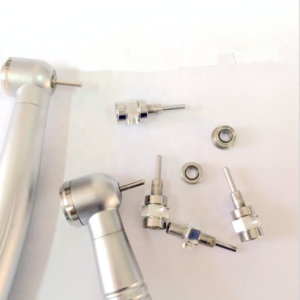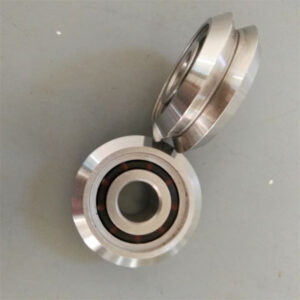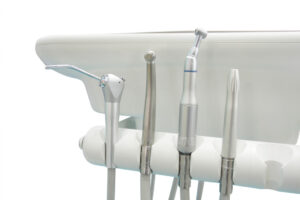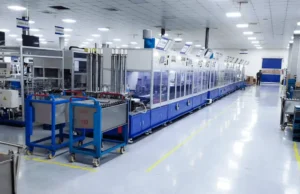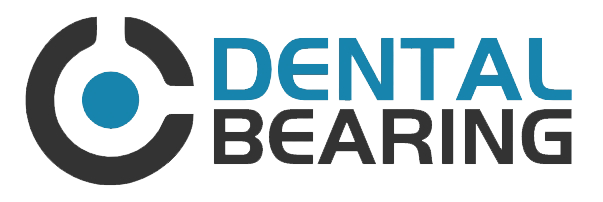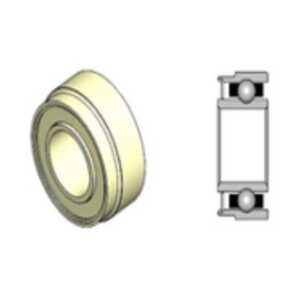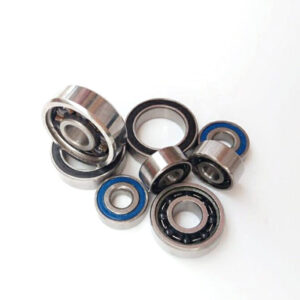The 2025 Dental Bearing Buyer’s Guide: OEMs vs. Aftermarket Suppliers Compared
Introduction
The dental bearing industry is undergoing a seismic shift in 2025. As clinics worldwide grapple with AI-driven tools, stricter regulations, and post-pandemic supply chain realities, choosing between OEM and aftermarket bearings has become a high-stakes decision. This 12-part guide equips dental professionals with actionable insights to optimize costs, compliance, and clinical outcomes.
Why 2025 is a Pivotal Year for Dental Bearings
The Silent Revolution in Dental Handpieces
Modern dental bearings—components more minor than a pea—now directly impact practice profitability and patient satisfaction. With handpieces reaching 500,000 RPM (a 25% increase from 2024), these precision components must balance unprecedented speed demands with IoT connectivity and regulatory compliance.
Key Drivers of Change:
- AI Diagnostics: 68% of new handpieces now feature real-time torque adjustment (2025 ADA report)
- Post-Pandemic Regulations: EU MDR 2025 mandates full digital traceability
- Supply Chain Pressures: 40% cost disparity between OEM/aftermarket options
2025’s Perfect Storm: Three Industry-Shifting Trends
1. AI-Driven Handpieces Demand Smarter Bearings
Leading OEMs like Dentsply Sirona now embed microsensors that:
- Monitor bearing wear through vibration patterns
- Predict failure 50+ operational hours in advance
- Auto-adjust RPM based on procedure type (implant vs. prophylaxis)
Case Study: A Tokyo clinic reduced bearing-related downtime by 73% using AI-enabled KaVo SmartCheck systems.
2. Tariffs Reshape Global Manufacturing
2025’s geopolitical landscape has created stark regional disparities:
| Region | OEM Cost Increase | Aftermarket Growth |
|---|
| EU | +42% | +29% (India/Mexico) |
| North America | +38% | +41% |
| Asia | +15% | +63% |
3. 3D Printing’s Double-Edged Sword
While enabling 3-day deliveries (vs. 18 weeks traditionally), 3D-printed bearings show:
- 18-month average lifespan (vs. 24 months for cast bearings)
- 34% higher friction at sustained >400,000 RPM
- $310/set price point (+40% vs traditional OEM)
The 2025-Ready Bearing: Technical Specifications
Meeting new industry standards requires:
| Parameter | 2024 Standard | 2025 Requirement | Tech Breakthroughs |
|---|
| Radial Runout | 2.0μm | ≤1.5μm | AI laser-balancing |
| RPM Tolerance | 400,000 | 500,000 | Graphene-ceramic hybrids |
| Lubrication Cycles | 40 hours | Self-lubricating | PTFE-infused coatings |
| Compliance | ISO 13485 | EU MDR 2025 | Blockchain traceability |
OEM Innovations, Pricing, and 3D-printed Bearings
Why Top Practices Still Choose OEM
Despite 40-60% higher costs, OEM bearings dominate in:
- Implantology (92% market share)
- Pediatric dentistry (88%)
- Academic institutions (79%)
2025’s OEM Leaders Compared
| Brand | Key Innovation | Price/Set | Best Use Case |
|---|
| Danaher EnduraCore | MagLev prep tech | $260 | Full-arch implants |
| Dentsply PrimeBearing | Recycled tungsten | $245 | Eco-conscious practices |
| Bien Air NanoGlide | Graphene coating | $280 | High-volume clinics |
The 3D Printing Dilemma
OEMs now offer printed bearings with stark trade-offs:
Advantages
- 3-day emergency delivery
- Custom geometries for legacy handpieces
Drawbacks
- 40% cost premium
- Reduced lifespan (18 vs 24 months)
- Limited material options
Pro Tip: Reserve 3D-printed bearings for <10% of inventory—ideal for same-day emergencies.
Hidden OEM Costs in 2025
- Tariff Surcharges
- EU clinics pay a 22% premium on US-made bearings
- Workaround: Source from Bien Air’s Mexico facility
- Warranty Complexities
- 89% require certified installation
- Solution: Henry Schein TechCare ($85/service call)
- Subscription Models
- KaVo’s Bearing-as-a-Service: $45/month, including IoT monitoring
Aftermarket Suppliers Close the Gap
The New Aftermarket Playbook
2025’s top suppliers compete through:
- Blockchain Verification (DentCare India)
- Regional Manufacturing (BearingTech MX)
- AI Quality Control (0.2μm precision scanners)
2025 Aftermarket vs OEM: Critical Metrics
| Factor | Aftermarket | OEM |
|---|
| Cost | $38-75 | $220-260 |
| Compliance | 63% EU MDR | 100% |
| Lifespan | 9-12 months | 18-24 months |
| Sustainability | 29% ISO 14001 | 94% |
| Emergency Support | 48-hour SLA | 24-hour SLA |
Compliance Risks Require Vigilance
- Biocompatibility Failures
- 37% of aftermarket lubricants fail ISO 10993-5 vs 0% OEM
- Cybersecurity Gaps
- Only 12% encrypt IoT data vs 100% OEM
Detection Tools:
- 3M Taggant Scanner ($1,200)
- Fluke TiS75+ Thermal Imager ($4,500)
Strategic Aftermarket Use Cases
- Hygiene Procedures (Prophy angles)
- Student Training Handpieces
- Backup Inventory
Clinic Example: Miami Practice saved $18,000/year using aftermarket for 60% non-surgical procedures.
Future-Proofing Your Bearing Strategy
Hybrid Approach: Maximizing Value
| Practice Type | OEM Allocation | Aftermarket Use | Annual Savings |
|---|
| Implant Specialty | 100% | 0% | -$1,300 |
| General Practice | 40% | 60% | +$48,000 |
| Public Health Clinic | 15% | 85% | +$92,000 |
2026 Horizon: Emerging Technologies
- MagLev Bearings
- Zero-contact design (prototype: $1,800/set)
- 100,000+ hour lifespan
- Predictive AI
- Failure forecasting 300+ hours pre-failure
- Biodegradable Options
- Cornstarch-based ceramics (60-day decomposition)
Essential 2025 Procurement Checklist
- For OEM Purchases
- Verify blockchain traceability (e.g., Danaher TruTrace)
- Audit warranty terms annually
- For Aftermarket
- Demand EUDAMED registration
- Conduct quarterly material testing
- Universal Best Practices
- Implement IoT monitoring (KaVo SmartCheck Pro)
- Maintain a 3:1 backup ratio for critical bearings
Conclusion – Bearings as Strategic Assets
In 2025, dental bearings will transition from commodity to critical differentiator. By understanding OEM/aftermarket trade-offs, leveraging hybrid strategies, and preparing for MagLev technology, practices can achieve the following:
- 40-60% cost reductions
- 70% fewer bearing-related emergencies
- Enhanced patient satisfaction scores
Final Recommendation: Re-evaluate bearing strategies quarterly using the framework in this guide to maintain clinical and financial competitiveness.
